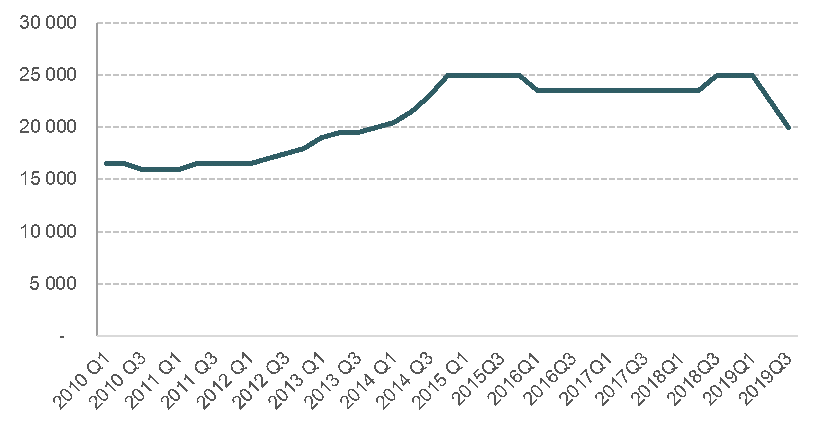
Why high-street retail rents are experiencing downward pressure
From being a market with zero vacancy, limited supply of quality retail space, and high demand from new international tenants with higher willingness to pay high rents, the Oslo high-street market now feels the heat of strong competition and retail restructuring. The activity of the years 2010-2016 pushed retail rents to record high levels, but today, the high-street market experiences increasing vacancy and downward pressure on rent.
A few years ago, the Oslo high-street market experienced strong retailer demand, especially from international luxury brands and other high-profile brands with lack of presence in Norway. The Norwegian economy was strong and stable with high purchasing power, and Oslo was the fastest growing capital in Europe. In addition, the Oslo retail market was at this point underdeveloped compared to Stockholm and Copenhagen, making it an interesting new market to enter for new retail tenants. This, together with the lack of available quality retail space pushed the prime rent to record-high levels. High-end retailers clustered between Steen & Strøm Department Store and the Parliament, making Nedre Slottsgate the street with the highest retail rental growth in Europe. Nordic mass-market brands continued to have a strong presence in, or close to, Karl Johans gate. Click here to read our article “Nedre Slottsgate overgår Europa” (only in Norwegian) from Q2 2016.
As the years have passed, several luxury brands have opened stores and have become a natural part of the retail landscape in Oslo, but we now see lower new demand from the luxury segment. In addition, fast-fashion experiences increased competition from e-commerce and changing consumer preferences with higher focus on sustainability. Clothing and shoes are more frequently bought through online platforms. According to the latest retail report from Virke, the Norwegian clothing industry experiences solid growth, but the consumer uses other channels than the physical store when buying clothes, leaving clothing stores with a growth of only 1% between 2012 and 2017. Clothing and shoes are by far the sectors with the highest footprint in the shopping streets of Oslo.
As the retail scene is changing with e-commerce being the most significant change, retailers have been forced to restructure their business. The expected shares of the total distribution going through e-commerce, street retail or through whole-sale is an important question, and nobody has a clear answer for either their own niche or the industry as a whole. In Europe as a whole, several observers forecast that approx. 30-35% of retail will be e-commerce. In the UK where the cost of distribution and logistics is lower, as much as 40-45% is forecasted. For Norway, with a much higher cost level and complex geography and infrastructure, the forecast is below European average. The change into an omni-channel distribution has caused retailers’ costs to increase and margins to shrink.
Increased bankruptcies and store closings within the clothing and shoes sectors is now discussed in most major media. The above-mentioned restructuring and increased costs have resulted in record low expansion activity – leaving attractive high-street premises vacant. As a result, the traditional high-street tenant is no longer willing or able to pay high rents, resulting in a downward pressure on prime rents throughout 2018. Prime high-street rents in Oslo are now below NOK 20,000 per sq. m as shown in the graph.
However, it is important to note that the luxury segment continues to experience solid growth in turnover and luxury bags, watchmakers and jewellers are the main winners in the Oslo shopping market.

As of now, the situation is complex and there are not yet signs of a stabilization in rental levels. There will be new tenants in centrally located space, but it remains to be seen if rents find a new stable level. However, new tenants, in the shape of “non-retail” and “non-fashion” players are seeing opportunities in the high-street markets, and sustainable concepts are increasing in popularity and will most likely be the winners in the future. Some of these already have started absorbing space in central locations.
However, the Oslo office market, especially the CBD areas, is currently in a positive cycle with record low vacancy and rising rents. Office space located in the high-street area in Oslo has experienced strong growth in rent levels in the past 12 months, and growth is expected to continue going forward due to increasing demand and limited supply.